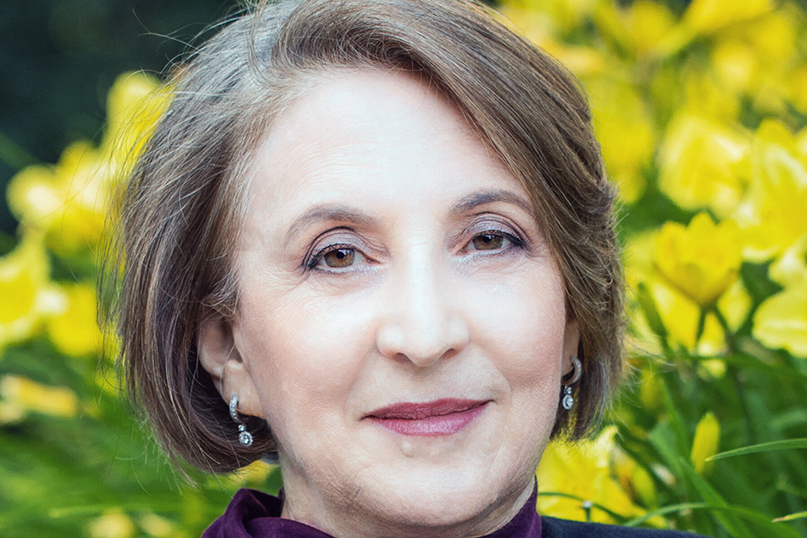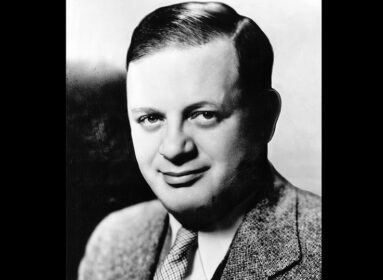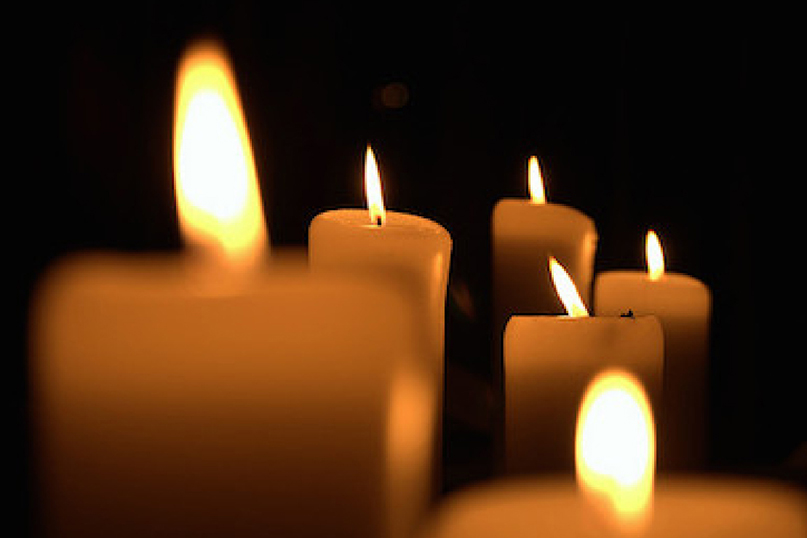
“Yom Hazikaron laShoah ve-laG’vurah” — “Day of Remembrance of the Holocaust and the Heroism — also known simply as “Yom Hashoah”– is observed on the 27th day of the month of Nisan (the anniversary of the Warsaw Ghetto uprising).
This year, Yom Hashoah begins after sunset on the evening of Wednesday, April 27, and concludes the evening of Thursday, April 28. Community events commemorating the Holocaust are planned throughout the state during that week. (See What’s Happening column page 38.)
Each year, Yom Hashoah is marked by memorial gatherings held throughout the world, highlighted by candle-lighting ceremonies with elderly survivors, speeches by dignitaries, and the reading aloud of the names of the six million who perished.
In Israel, a siren wails for two solid minutes in the morning, bringing the country to a stand-still, as pedestrians freeze in place, students stop their learning and workers their tasks, and even drivers climb out from behind the wheel to stand silently with bowed heads.
New York City still includes 2 French Nazi collaborators in its Canyon of Heroes. Why?
By Menachem Z. Rosensaft
(JTA) – Statues of Presidents Thomas Jefferson and Theodore Roosevelt were recently removed from, respectively, the New York City Council chamber at City Hall and the entrance to the American Museum of Natural History on Central Park West. Municipal officials, acting amidst a wave of sensitivity to historical slights, noted Jefferson’s role as a slaveholder and the Roosevelt statue’s demeaning depiction of Native Americans.
Regardless of their shortcomings, neither U.S. president has ever been accused of dispatching tens of thousands of people to be killed in gas chambers. But two people honored by New York City have been.
For most of the past two decades, plaques honoring Philippe Pétain and Pierre Laval, under whose watch as leaders of the Hitler-allied Vichy regime approximately 77,000 Jews living in France were murdered, have been on prominent display in New York City.
The Pétain/Laval government promulgated draconian antisemitic laws, “aryanized” or seized Jewish property and rounded up thousands of Jews for deportation from France to Nazi death camps in German-occupied Poland.
Yet black granite markers engraved with Pétain’s and Laval’s names remain untouched on Broadway’s Canyon of Heroes in lower Manhattan.
The Pétain and Laval plaques and 204 others embedded in the sidewalks between Battery Park and Chambers Street commemorate individuals and groups celebrated with ticker-tape parades beginning in 1886. On Oct. 22, 1931, Laval, then prime minister of France, starred in his parade. Four days later, Marshal Pétain, the French army’s commander-in-chief at the end of World War I, was escorted up Broadway by 2,000 uniformed men and three bands.
At that time, neither of them had yet descended into ignominy; that happened during World War II. Both were tried for treason in 1945, found guilty and sentenced to death. Laval was executed but Pétain’s sentence was commuted to life imprisonment.
The plaques, however, were installed in 2004 – not 1931 – by which time Pétain and Laval had been notorious for over 60 years. Imposing these blights on the New York City landscape in the first place didn’t appear to ring alarm bells – a fact that speaks volumes in and of itself.
Serge Klarsfeld, one of France’s most prominent authorities on the Holocaust, revealed in 2010 that Pétain, the chief of state of Vichy France from 1940 until 1944, had personally and significantly worsened conditions for Jews in France: A draft of his government’s first Law on the Status of the Jews (“Statut des Juifs”) of October 1940, which defined who was Jewish and which excluded Jews from large segments of French public life, included Pétain’s handwritten notations making the law ever more strict.
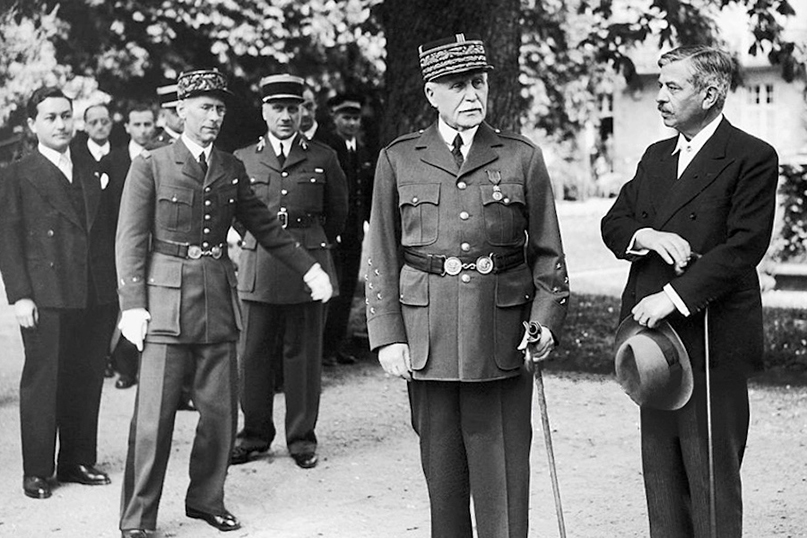
(Keystone-France/Gamma-Keystone via Getty Images)
For his part, Laval, the head of the Vichy government, told German and other correspondents at a news conference in September 1942 that he intended to continue deporting alien Jews – that is, refugees and other Jews who did not hold French citizenship – from France. “No man and nothing,” Laval declared, “can sway me from my determination to rid France of alien Jews and send them back where they came from.”
What’s more, while most of the Jews sent from France to the Nazi death camps were indeed foreign or stateless Jews, large numbers of native French Jews were deported and killed as well.
Symbolism matters. A lot. And for better or worse, Pétain and Laval have come to epitomize Nazi collaboration at its worst. In France, no one except for ultra-right political extremists like Éric Zemmour – a reactionary (and, unfortunately, Jewish) fringe candidate who finished a distant fourth in Sunday’s first round of French presidential elections – wants to have anything to do with either of them. The last French street bearing Pétain’s name, in the village of Tremblois-lès-Carignan, was renamed in 2011.
In 2017, with Confederate monuments coming down across the United States, attempts were made to have the Pétain and Laval plaques removed from Lower Manhattan. At first, then-Mayor Bill de Blasio agreed, tweeting that “the commemoration for Nazi collaborator Philippe Pétain in the Canyon of Heroes will be one of the first we remove.”
His resolve did not last. In January 2018, the Mayoral Advisory Commission on City Art, Monuments, and Markers recommended that the Pétain plaque should stay where it is, arguing that “if a marker is accurate, and not celebratory of egregious values or actions, it should not be removed.”
The commission did throw a bone of sorts to those who were offended by the Pétain plaque. It suggested “re-contextualizing” it by adding explanatory texts so as to “reframe” the markers “as a teachable moment.” It is not clear whether the commission discussed the Laval plaque at all.
Four years later, not only are the Pétain and Laval markers still there, but no “contextualizing” content has been added. These two Holocaust enablers with blood on their hands continue to receive equal billing with the likes of Winston Churchill, Dwight D. Eisenhower, David Ben-Gurion, Queen Elizabeth II, Charles de Gaulle and Nelson Mandela.
I am not taking issue here with the removal of the Jefferson and Roosevelt statues. But if they were taken away, what possible rationale can there be for not doing the same to the Pétain and Laval plaques?
Petain and Laval, incidentally, are not the only World War II villains to be glorified in the United States. The Von Braun Center in Huntsville, Alabama, is named for Wernher von Braun, who, prior to reinventing himself as a key architect of the American space program in the 1950s and 1960s, was a Nazi major who lethally exploited inmates at the Dora-Mittelbau concentration camp to manufacture the Third Reich’s V-2 ballistic missiles. A large bust of von Braun stands prominently outside NASA’s Marshall Space Flight Center, also in Huntsville. My father, who was imprisoned at Dora for several months, said that conditions there were worse than he experienced at Auschwitz.
As the son of two survivors of Auschwitz and Bergen-Belsen, I urge Mayor Eric Adams to take a fresh, hard look at the obscenity of heroizing two antisemitic Nazi collaborators on the streets of New York City, and fervently hope that he will have these markers removed without further delay. It’s the morally right thing to do.
Menachem Z. Rosensaft is associate executive vice president and general counsel of the World Jewish Congress and teaches about the law of genocide at the law schools of Columbia and Cornell Universities. He is the author of Poems Born in Bergen-Belsen (Kelsay Books, 2021).
Boston is getting a Holocaust museum, thanks to a couple with a passion for Holocaust education
By Andrew Lapin
(JTA) – A new Boston-based foundation dedicated to Holocaust memory plans to build the city’s first Holocaust museum.
The Holocaust Legacy Foundation, which couple Jody Kipnis and Todd Ruderman founded after a 2018 March of the Living trip to Auschwitz, announced Thursday that it had purchased a 15,000-square-foot building near Boston Common, on the city’s American Independence-themed series of historical markers known as the Freedom Trail. The couple intends to turn it into a museum devoted to the memory of the Holocaust.
The cost was $11.5 million, according to the Associated Press.
The museum will strive “to make the lessons of the Holocaust relevant to new generations,” Kipnis said in a press release, describing the intended museum as an “interactive cautionary experience.” Ruderman added that the museum “will endeavor to commemorate the victims and survivors of the Nazi regime and the numerous genocides that happened before and since the Holocaust.”
They have already contracted a local architect to design the museum – Peter Quinn, in partnership with well-known architecture firm Berenbaum Jacobs Associates, which has also designed Holocaust museums in Dallas, Cincinnati and Macedonia. The firm’s lead, Michael Berenbaum, was also project director for the U.S. Holocaust Memorial Museum in Washington, D.C.
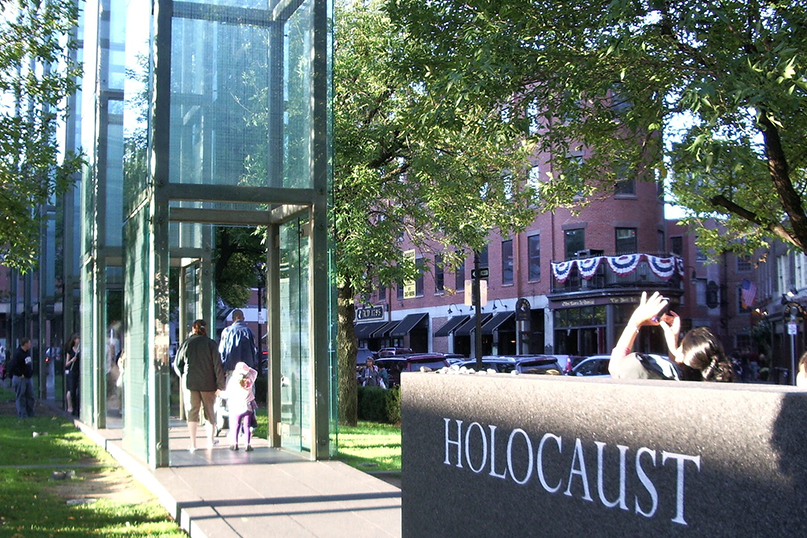
Funding for the museum is already in place, the couple say, although the announcement did not divulge their funding sources; they plan to start work on the project immediately. The couple are spearheading the museum independently: Other Boston-area Jewish groups, including the Combined Jewish Philanthropies of Greater Boston, are not involved.
“We welcome all efforts to expand educational opportunities and awareness about the reality, legacy, and lessons of the Holocaust,” Jeremy Burton, executive director of the Jewish Community Relations Council of Greater Boston, told JTA. “We appreciate the efforts of the museum trustees to engage and involve Boston area survivors, their descendants, and the stewards of the Memorial.”
Kipnis and Ruderman credited Holocaust survivor David Schaechter, a business partner of Ruderman and the subject of a 2018 documentary, with inspiring them to pursue the museum.
Also playing a role: their concern over the rise of antisemitism in the United States, including in Massachusetts, and over a destabilized Europe in the wake of Russia’s invasion of Ukraine.
The foundation also sponsors a program called Holocaust Legacy Fellows, which selects local teenagers to travel to Poland and hear firsthand accounts from survivors.
Boston is already home to an outdoor monument to victims of the Holocaust, titled the New England Holocaust Memorial, but the new museum would be the city’s first indoor center dedicated to the topic.
Uncovering the Hidden Story of the Liberator and Liberated
By Rachel Jager
It has been 77 years since World War II ended, yet the world will never forget the six million Jews and countless other victims who were murdered during the Holocaust.
While January 27, the anniversary of the liberation of the Auschwitz concentration camp in 1945, is recognized by the United Nations as International Holocaust Remembrance Day, the people of Israel and Jewish individuals across the globe commemorate the victims annually on Yom HaShoah.
On Wednesday, April 27 at 7 p.m., Jewish National Fund-USA will host a free virtual event in recognition of Yom HaShoah, featuring a live Q&A with Bernice Lerner, the author of All the Horrors of War: A Jewish Girl, a British Doctor, and the Liberation of Bergen-Belsen. In her book – the first to pair the story of a Holocaust victim with that of a liberator – Dr. Lerner traces the remarkable intertwined stories of her mother, who was a Jewish teenager at Bergen Belsen, and Hugh Llewelyn Glyn Hughes, a high-ranking military doctor in the British Second Army.
“Given the rise in Jew hatred and Holocaust denial, Bernice Lerner’s book needs to be read in high schools, colleges, and newsrooms throughout this country,” said Jewish National Fund-USA’s Reading Series host, Steven Shalowitz. “It’s thoughtfully written, carefully researched, and leaves the reader with a clear picture of the hell that Jews went through during the Shoah. And through it all, the inextinguishable human spirit runs through the work, leaving one hopeful for the future.”
Rachel Jager spoke with Dr. Lerner about why she wrote this book and its place in the landscape of Holocaust literature.
How did this book come about?
My first book, The Triumph of Wounded Souls: Seven Holocaust Survivors’ Lives, was a dissertation that eventually turned into a book. I never intended to write a book about anyone in my family, but then I thought about my mother. She and her sister were the only survivors of a large family. I wanted to lift from oblivion members of our family who had been killed; if I didn’t write about them, there would be no record of them ever having existed.
I have had an ongoing dialog with my mother for my entire life, talking about her experiences during the war. But when it came to her rescue, there was a hole in her memory – she had fallen unconscious. She couldn’t tell me how she was saved or about the actual mechanics of the rescue and I became very interested in that.
In researching the liberation of Bergen-Belsen, I came across the name Glyn Hughes. He was the military officer who orchestrated relief efforts at the notorious – and largest – concentration camp at the war’s end. I began to explore his life. He was a standout figure that nobody really knew about. I set about writing a dual biography of Glyn Hughes and my mom – a race-against-time rescue story.
How did you go about your research for the book?
I never really sat down to interview my mother, but I had started asking questions about her experiences when I was younger, and I could remember what she had told me. My mother would say that I had a “running tape recorder in my head,” but the fact is that the things that she told me were not the sort of things that kids usually hear from their parents. They made a deep impression. Everything in the book is 100% true, and I’m very lucky to have her. I continued to ask her about certain details as I was writing the book, which made the story richer. For example, at one point I wondered whether she could recall what she was wearing on the death march. She remembered.
Researching Glyn Hughes required real detective work, spanning many years. I went to London a few times and was in touch with every school he attended and every organization of which he was a part. I tracked down his daughter and spent a lot of time with her and she laid out for me all his medals and photo albums. I also spoke with his surviving son and with survivors who knew him personally, who had wonderful things to say about him.
What kinds of conversations do you hope the book will elicit?
I hope that it will cause people to think more deeply about the war, and to consider what they know and what they don’t know. For example, people have this idea about the liberation – the sun is shining, and the sky is blue, and people are cheering the liberators. But I hope that learning more about the actual events on the ground will help them realize how complex and difficult it was. No one can really understand it. My mother would say no movie or film can show what her experience was really like, but I hope the book will help people try to get close to the event and to take a leap of the moral imagination. Glyn Hughes was a stalwart for preparedness and broke down crying when he came to Bergen Belsen. He had seen and done so much but had no idea how to begin this rescue. He said, “I have seen all the horrors of war, but nothing to touch it” (which is where the title of the book comes from). I hope it will also help people to consider what it means to suffer such grave loss and what it means to witness such human tragedy; and how that can impact how we behave toward someone who is different, toward the stranger.
Why do you think that now is the right time for this book?
It is relevant right now because of the lack of understanding about the cataclysm and what Israel means to the Jewish people. And because of the rise in antisemitism, which makes one wonder, “How is this happening while survivors are still walking this earth?”
Tragically, we continue to see people being terrorized and brutally murdered. Both my mom and I are glued to news about what is happening in Ukraine. She intimately knows what it means to be caught in the wrong place and time in history. We talk about it every day.
Sign up for this free event to commemorate Yom HaShoah and learn more about this incredible true story at jnf.org/readingseries.
This article is paid for by the Jewish National Fund-USA, which ensures a strong, secure, and prosperous future for the land and people of Israel, and Jewish people everywhere.







 Southern New England Jewish Ledger
Southern New England Jewish Ledger